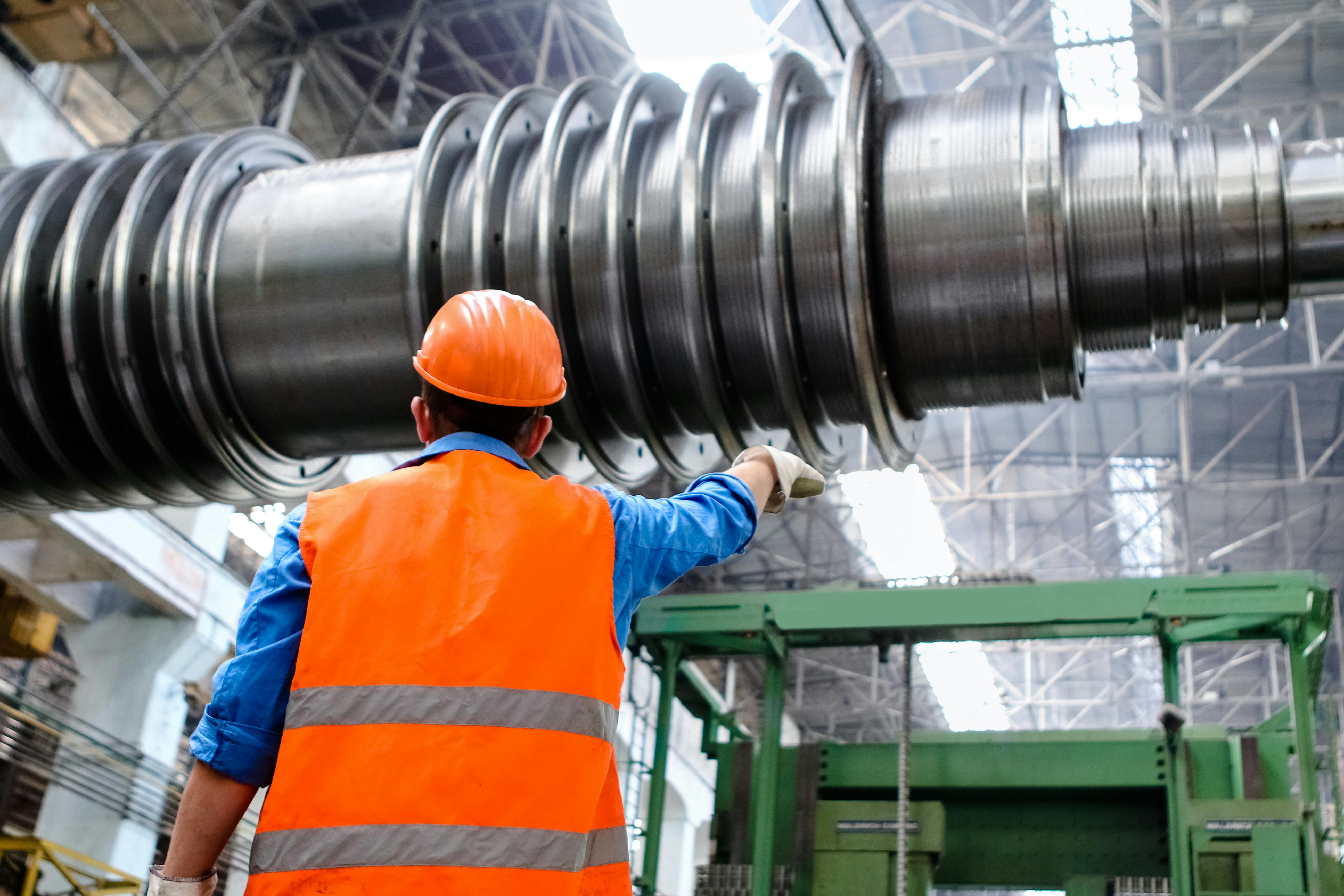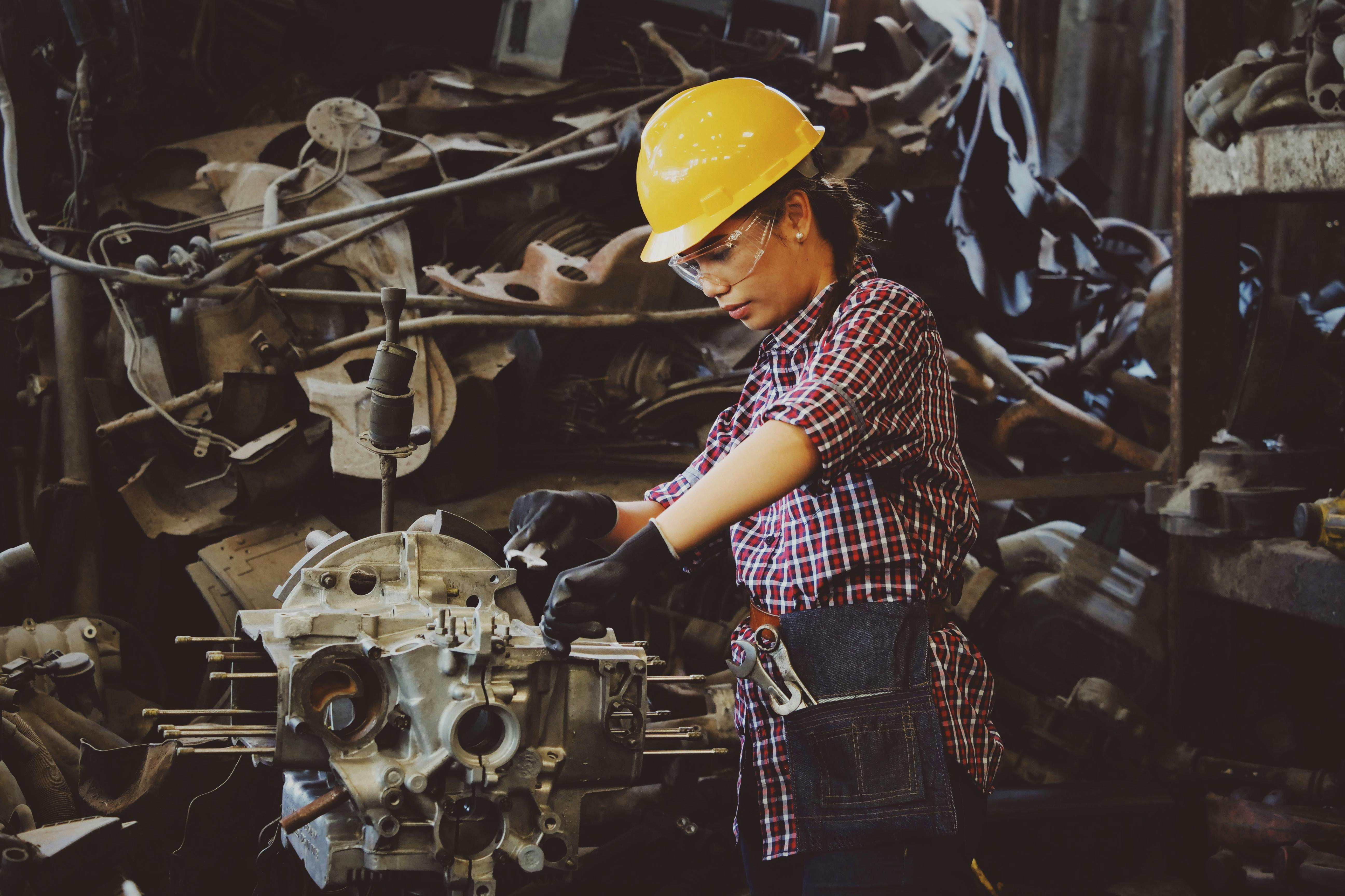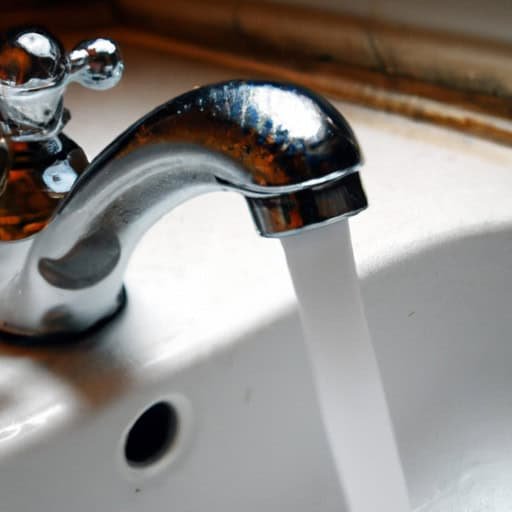In this article, you will discover effective maintenance measures to tackle the issue of bacterial contamination. With the rising concerns about hygiene and health, it is crucial to take proactive steps to ensure safe and clean environments. By following the tips and guidelines provided, you will be equipped with the knowledge to combat bacterial contamination and maintain a healthy living or working space.
Preventative measures for bacterial contamination
Bacterial contamination can pose a significant risk to the health and safety of individuals in any environment. Implementing preventative measures is key to reducing the likelihood of contamination and ensuring a clean and sanitary space for everyone. Here are some effective measures to consider:
Regular cleaning and disinfection
One of the most crucial steps in preventing bacterial contamination is maintaining a regular cleaning and disinfection routine. Cleaning surfaces with appropriate detergents and disinfectants can help eliminate bacteria and reduce the risk of transmission. It is important to thoroughly clean high-touch surfaces, such as doorknobs, light switches, and shared equipment. Develop a cleaning schedule and ensure that it is followed consistently.
Proper ventilation and air circulation
Proper ventilation and air circulation play a significant role in preventing bacterial contamination. Good ventilation helps remove airborne contaminants, including bacteria, and promotes the flow of fresh air. Make sure that your facility has adequate ventilation systems and consider installing air purifiers or filters that can effectively trap and eliminate bacteria in the air.
Effective waste management
Proper waste management is essential for preventing the growth and spread of bacteria. Ensure that waste bins and containers are regularly emptied and cleaned. Implement a segregation system for different types of waste and provide clear guidelines to staff on how to dispose of waste properly. This will minimize the risk of bacterial contamination and promote a cleaner environment.
Implementing a hand hygiene protocol
Hand hygiene is fundamental in preventing the spread of bacteria. Establishing a hand hygiene protocol is vital to ensure that everyone in your facility understands and practices proper handwashing techniques. Promote the use of hand sanitizers and ensure that handwashing facilities with soap and water are readily available. Educate staff on the importance of hand hygiene and provide training sessions on proper handwashing techniques.
Monitoring and testing for bacterial contamination
Regular monitoring and testing are necessary to identify and address potential sources of bacterial contamination. Here are some methods to consider:
Microbiological testing
Microbiological testing involves analyzing samples for the presence and identification of bacteria. This testing can help identify any areas or equipment that may be contaminated and allow for appropriate measures to be taken. Regular microbiological testing can provide valuable information on the effectiveness of your cleaning and disinfection practices.
Environmental monitoring
Environmental monitoring involves regularly inspecting the environment for signs of bacterial contamination. This can include visual inspections, swab sampling, and air quality monitoring. By monitoring the environment, you can identify areas that may require additional cleaning or disinfection and take corrective actions promptly.
Water quality testing
Water quality testing is crucial, especially in areas where water is used for various purposes such as drinking, handwashing, and cleaning. Contaminated water can harbor bacteria and pose a significant health risk. Regular testing of water sources can help identify any potential contamination and enable appropriate actions to be taken, such as implementing water treatment measures or ensuring the use of reliable water sources.

Training and education
Proper training and education are essential components in preventing bacterial contamination. By equipping your staff with the necessary knowledge and skills, you can create a culture of cleanliness and ensure consistent adherence to best practices. Consider the following approaches:
Educating staff on proper cleaning and disinfection procedures
It is important to educate your staff on the proper cleaning and disinfection procedures specific to your facility. Provide comprehensive training sessions that cover the correct use of cleaning agents, techniques for handling contaminated materials, and the appropriate disinfection protocols. Ensure that staff members are aware of the importance of following these procedures diligently.
Training on personal hygiene and handwashing techniques
Aside from cleaning and disinfection training, it is crucial to provide training on personal hygiene and proper handwashing techniques. This should include clear instructions on when and how to wash hands effectively, the use of hand sanitizers, and the importance of maintaining personal hygiene in the workplace. Reinforce these training sessions periodically to ensure that the information is retained and implemented consistently.
Providing resources and updates on best practices
Continuously providing resources and updates on best practices can help keep your staff informed and engaged in maintaining a clean and bacteria-free environment. Share informative materials, such as posters or brochures, that outline proper cleaning techniques, handwashing procedures, and other relevant information. Regularly communicate updates on any changes in protocols or emerging best practices to ensure that your staff is well-informed and equipped with the latest knowledge.
Using antimicrobial products
Utilizing antimicrobial products can offer an additional layer of protection against bacterial contamination. Incorporating these products into your maintenance practices can help inhibit bacterial growth and reduce the risk of transmission. Consider the following approaches:
Choosing the right disinfectants
Selecting the appropriate disinfectants is vital in effectively combating bacterial contamination. Look for disinfectants that are proven to be effective against a wide range of bacteria. Ensure that the disinfectants you choose are registered with the appropriate regulatory bodies and are compatible with the surfaces and equipment in your facility. Follow the instructions provided by the manufacturer for optimal disinfection results.
Implementing antimicrobial coatings and surfaces
Consider incorporating antimicrobial coatings and surfaces into your facility. These specialized materials have antimicrobial properties that can help inhibit bacterial growth and provide long-lasting protection. Antimicrobial coatings can be applied to various surfaces, such as walls, floors, and even equipment. These coatings create an inhospitable environment for bacteria, reducing the risk of contamination.
Using antimicrobial textiles and furnishings
Another way to prevent bacterial contamination is by utilizing antimicrobial textiles and furnishings. These specially treated fabrics and materials can help inhibit the growth of bacteria and prevent their transmission through contact. Consider using antimicrobial curtains, bedding, and upholstery in your facility. Additionally, opt for antimicrobial furnishings, such as chairs and desks, to further minimize the risk of bacterial contamination.

Maintaining proper temperature and humidity levels
Maintaining appropriate temperature and humidity levels is crucial in preventing bacterial growth and contamination. Bacteria thrive in certain conditions, so regulating these environmental factors can significantly reduce the risk of contamination. Take the following steps:
Monitoring and controlling temperature
Regularly monitor the temperature in your facility to ensure that it remains within the recommended range. Bacteria tend to proliferate in warm temperatures, so maintaining a cool environment can help inhibit their growth. Utilize temperature monitoring devices, such as thermometers or automated systems, to ensure that the temperature is consistently controlled.
Regulating humidity levels
Proper humidity levels are also essential in preventing bacterial contamination. High humidity can create a conducive environment for bacterial growth, while low humidity can lead to dry conditions that may promote the spread of contaminants. Utilize humidifiers or dehumidifiers to regulate the humidity levels and maintain an environment that is unfavorable for bacterial growth.
Using HVAC systems with antimicrobial filters
Consider using HVAC (Heating, Ventilation, and Air Conditioning) systems with antimicrobial filters to improve indoor air quality and reduce the risk of bacterial contamination. These filters are specially designed to trap and eliminate bacteria, ensuring that the circulated air is clean and free from potential contaminants. Regularly clean and replace the filters as recommended by the manufacturer.
Regular equipment maintenance
Proper maintenance of equipment is essential to prevent bacterial contamination. Regular cleaning, disinfection, inspection, and servicing of equipment can help identify and eliminate potential sources of bacteria. Follow these steps:
Cleaning and disinfection of equipment
Develop a regular cleaning and disinfection schedule specifically for the equipment used in your facility. Different types of equipment may require different cleaning methods, so ensure that you are following the manufacturer’s guidelines. Use appropriate cleaning agents and disinfectants to thoroughly clean and disinfect the equipment to reduce the risk of bacterial contamination.
Regular inspection and servicing
Regularly inspecting equipment can help identify any signs of damage or wear that may compromise the cleanliness and functionality of the equipment. Inspect for loose or damaged parts, leaks, or other indicators that may contribute to bacterial contamination. Schedule routine servicing and maintenance to address any issues promptly and ensure that the equipment is operating optimally.
Following manufacturer’s guidelines
Always follow the manufacturer’s guidelines when it comes to the maintenance and care of equipment. Manufacturers provide specific instructions for cleaning, disinfection, and servicing to maintain the quality and functionality of the equipment. Deviating from these guidelines may lead to inadequate cleaning or potential damage to the equipment, increasing the risk of bacterial contamination.

Establishing protocols and Standard Operating Procedures (SOPs)
Having established protocols and Standard Operating Procedures (SOPs) in place is crucial to maintaining a bacteria-free environment. These protocols provide clear guidelines for cleaning, disinfection, waste management, and other essential processes. Consider the following steps:
Creating protocols for cleaning and disinfection
Develop and document detailed protocols for cleaning and disinfection practices within your facility. These protocols should outline step-by-step instructions on how to clean different areas, surfaces, and equipment effectively. Specify the appropriate cleaning agents and disinfectants to use, as well as the frequency at which each area should be cleaned. Regularly review and update these protocols to ensure that they align with the latest guidelines and best practices.
Developing SOPs for handling and storing hazardous materials
In healthcare, laboratory, or other industries where hazardous materials are present, it is crucial to develop SOPs for their proper handling and storage. These SOPs should include guidelines for minimizing the risk of bacterial contamination associated with the handling and storage of hazardous materials. Implement strict protocols on handling, storage, and disposal to prevent any potential spread of bacteria.
Implementing protocols for waste management
Developing protocols for waste management is essential to prevent bacterial contamination and ensure the proper disposal of waste. Create guidelines on the segregation, handling, and storage of different types of waste. Specify the appropriate containers and disposal methods for each waste category. Train your staff on these waste management protocols to ensure their effective implementation.
Promoting a culture of cleanliness
Promoting a culture of cleanliness and hygiene among your staff is crucial in maintaining a bacteria-free environment. Consistently reinforcing the importance of cleanliness will encourage everyone to take responsibility for maintaining cleanliness. Consider these approaches:
Encouraging cleanliness and hygiene among staff
Regularly communicate the importance of cleanliness and hygiene to your staff. Emphasize that their actions contribute to the overall cleanliness of the facility and impact the well-being of everyone present. Encourage personal responsibility for cleanliness and promote a positive attitude towards maintaining a clean environment.
Creating a clean and organized work environment
Lead by example in keeping the facility clean and organized. Ensure that all areas are well-maintained, clutter-free, and properly labeled. Provide sufficient storage solutions and clearly designate areas for specific items or equipment. A clean, organized work environment not only reduces the risk of bacterial contamination but also improves productivity and morale.
Rewarding good hygiene practices
Recognize and reward staff members who consistently demonstrate good hygiene practices. Positive reinforcement can encourage employees to maintain cleanliness and reinforce the importance of proper hygiene. Consider implementing a reward system or recognition program to acknowledge the efforts of individuals or teams who contribute to maintaining a bacteria-free environment.
Health and safety regulations compliance
Adhering to health and safety regulations is essential to prevent bacterial contamination and ensure a safe environment for everyone. Familiarize yourself with local health and safety guidelines and industry-specific regulations. Consider the following steps:
Following local health and safety guidelines
Stay up-to-date with local health and safety guidelines and ensure that your facility is in compliance with relevant regulations. Regularly review these guidelines to stay informed about any changes or updates. Implement necessary measures to align your maintenance practices with the guidelines and ensure the protection of your staff and visitors.
Adhering to industry-specific regulations
Certain industries may have specific regulations and guidelines pertaining to bacterial contamination and prevention. For example, healthcare facilities may need to adhere to stricter protocols to minimize the risk of infection. Familiarize yourself with the regulations specific to your industry and ensure that your maintenance practices comply with these requirements.
Conducting regular risk assessments
Regularly conduct risk assessments to identify potential areas of concern regarding bacterial contamination. Assess each area of your facility for potential risks, the effectiveness of current maintenance practices, and any areas that may require improvement. Review the findings of risk assessments periodically and implement necessary measures to address identified risks.
Collaborating with professionals
Collaborating with professionals who specialize in infection prevention or facility maintenance can provide valuable expertise and support in addressing bacterial contamination. Consider the following approaches:
Seeking advice from microbiologists or infection prevention specialists
If you require specialized knowledge or assistance in addressing bacterial contamination, don’t hesitate to seek advice from microbiologists or infection prevention specialists. These professionals can provide insights into best practices, recommend suitable products or measures, and help you develop tailored strategies to prevent bacterial contamination in your specific environment.
Hiring professional cleaning services
If you have limited resources or require specialized expertise, consider hiring professional cleaning services. Professional cleaners are trained in proper cleaning and disinfection techniques and often have access to specialized equipment and products. They can ensure that your facility receives thorough and effective cleaning, minimizing the risk of bacterial contamination.
Collaborating with experts for facility design and maintenance
When designing or renovating your facility, collaborate with experts in facility design and maintenance. These professionals can help ensure that your facility is designed to minimize the risk of bacterial contamination. From specifying appropriate materials and surfaces to designing effective ventilation systems, their expertise can contribute to creating a clean and bacteria-free environment.
In conclusion, combating bacterial contamination requires a multifaceted approach that includes preventative measures, monitoring and testing, training and education, the use of antimicrobial products, proper maintenance, establishment of protocols, promoting a culture of cleanliness, compliance with health and safety regulations, and collaborating with professionals. By incorporating these measures into your maintenance practices, you can significantly reduce the risk of bacterial contamination and ensure a healthier and safer environment for all.

